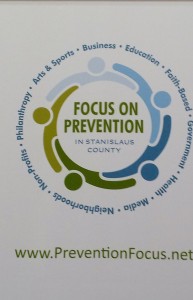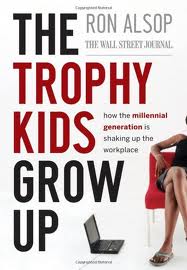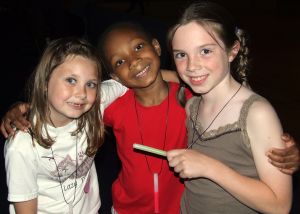
Wordless Wednesday: The Living Desert, Palm Desert, CA



“I slept in the cemetery. The police won’t even go there,” shares one previous Modesto area homeless woman. “A man tried to help me but I didn’t trust him. I was beaten by a man so I had my guard up. I was tired and cold, especially in the winter. I didn’t have a hot bath. But I refused to go somewhere safe. The graveyard felt safe. But this man was persistent. I eventually let him help me get off the streets.” (1)
“I was kicked out of my home at age 19,” said another former homeless man. “I left with a backpack and nothing else in the middle of the night. I was scared and tried to figure out what to do. I had $50.00 from my last paycheck, so I went to Denny’s at Five Points. Sometimes I stayed in Graceda Park, slept in churches, or in someone’s backyard. It was hot, 90 degrees, and summer was approaching. I kept busy trying to find food every day. If I couldn’t find enough to eat, I’d steal groceries. I pan handled to support my drug habit.” (1)
These are just two of the eight stories told by men and women who previously experienced homelessness in Stanislaus County. The best news — they are no longer homeless. Most likely wherever you live, you can find homeless men, women, and children who can share similar sad stories. . . if only someone took the time to listen.
The Influence of One Person . . .
I noticed a common thread to the path “Finding Their Way Home.” The path often began with one person.
Someone . . . cared: a police officer, doctor, friend, family member, girlfriend, or someone they met on the streets. Several mentioned how God intervened.
Someone . . . saw beyond their circumstances.
Someone . . . viewed them as the person they were meant to be.
The Way Home
With that one person’s help, homeless men and women began their journey home. They started accepting assistance and accessing the many available resources to end their homelessness. These courageous men and women now express hope. They demonstrate joy and heartfelt thankfulness sometimes through tears and cracked voice. They are no longer homeless.
“I’m glad I can participate and give back to the community that helped me,” said another panelist. (1)
The previous homeless also want to help others “Find Their Way Home.”
Summit on Homelessness
The previous homeless want to help others “Find Their Way Home.” So do 500 Stanislaus County residents who actively participated in Finding Our Way Home: Summit on Homelessness at the Centre Plaza in Modesto, California on Thursday, October 1, 2015. Participants represented agencies, non-profit organizations, businesses, churches, and concerned citizens like me. The day-long summit featured personal stories, statistics, and strategies. In the afternoon participants from different cities met together to discuss issues related to their communities, such as Patterson, Ceres, and Riverbank.
Personal Questions
Thought provoking questions and discussions were designed to stir each participant’s heart.
What About You?
You can read more about the event at
http://preventionfocus.net/finding-our-way-home/
Note 1. These compiled statements are from previously homeless presenters’ on the panel and/or from a previously recorded video.

“We don’t have money for that,” I state. I continue adding items from my shopping list to the grocery cart.
“I want donuts. Pleassssse,” my three-year-old daughter begs.
“We don’t have any money,” I explain once again. “Count three cans of corn for mommy. That’s right; you found three cans from our shopping list.”
Embarrassing Moment
After several more times of telling my daughter we don’t have any money, we finally finish our grocery list and approach the checkout stand. The clerk scans all the items and summarizes, “That will be $28.35.”
“My mom doesn’t have any money,” my daughter quickly informs her. My face reddens with embarrassment.
The kind clerk informs her, “That’s okay. I don’t have any money either,” as she smiles at me.
No Money for That
Of course my child thinks I don’t have any money to buy groceries. How many times did I say that to her? What I neglected to explain to my three-year-old is that we have money for what we NEED, but not always for extra things that we WANT.
Wants versus Needs
So began our new home campaign. When Kristen saw something she wanted, my husband and I started explaining the difference between a need and a want. For example, “It would be really fun to have ….. Let’s put it on your want list for the future.” If it was something she needed, we clarified, “Yes, you’re right. You need new shoes. Your old shoes are too small.”
Over Time
By the time our daughters were in early elementary school, they could accurately identify the difference between a need and a want. God always provides for our needs. And many times He blesses us with our wants.
Lessons Learned
In the grocery store that day, I learned a key component of money management. We must teach our children the difference between a need and a want. It is a basic principle of training children about money. Do you know the difference? What about your children? Do they know the difference? Today’s a perfect day for teaching this concept.
Image source: Stock.XCHNG www.sxc.hu/. coins-1428100-s.
 When I talk with community and business people about challenges they’re facing with today’s workforce, I frequently share one of the most relevant books I’ve read addressing this topic.
When I talk with community and business people about challenges they’re facing with today’s workforce, I frequently share one of the most relevant books I’ve read addressing this topic.
The Trophy Kids Grow Up: How the Millennial Generation is Shaking up the Workplace. Author Ron Alsop traces this phenomenon and how parenting the Millennial Generation has impacted Fortune 500 companies.
The Millennial Generation
If you work with young people who were born between 1980 and 2001, information about the Millennial Generation (also called Generation Y and Generation Next) explains about this new kind of student, worker, and global citizen.
These children received “trophies” or rewards for most everything they’ve ever done. Now they’re entering the workforce demanding “rewards” for completing standard job responsibilities.
Fortune 500 Companies
The “helicopter parent” provides the foundation for Alsop’s observations. Their children are showing up with college degrees at Fortune 500 Companies and bringing their parents with them for interviews and salary negotiations. You’ve probably heard of “Take Your Daughter to Work,” but he addresses “Take Your Parents to Work” and the challenges this is creating for corporate America.
Stirring Up the Workplace
This eleven chapter, 262 page book, addresses the millennial generation’s tendencies, how the millennials and employers will adapt to one another, and organizations who are taking the lead in effectively working with this generation and their parents.
The book cover states, “The Trophy Kids Grow Up will show employers, parents, and millennials themselves how this remarkable generation promises to stir up the workplace–and perhaps the world.”
Book Information
The Trophy Kids Grow Up: How the Millennial Generation is Shaking up the Workplace, Ron Alsop, Jossey-Bass, 2008. Available from Amazon.com. Hardcover $19.16, Kindle $13.00, audible $9.95 (9/18/2015).

“Would you like to join the council?” asks the council chair.
“Thanks for the invite, but I’m still visiting. I’m on medical leave this year from Merced College. I’m going back to work next fall,” I explain.
But that didn’t happen. My health deteriorated and I was put on disability/retirement. With that major life change came countless disappointments and struggles alongside blessings and joy.
The Council
The Stanislaus Child Development Local Planning Council (SCDLPC) is both a blessing and a joy. This is my fourth year serving alongside a 16 member group appointed by the Stanislaus County Board of Supervisors and the Stanislaus County Superintendent of Schools. This group meets monthly and is comprised of:
Child Care Providers,
Community Representatives,
Consumers of Child Care Services (Parents/Guardians), and
Public Agency Representatives.
Mission Statement: “The Stanislaus Child Development Local Planning Council shall provide leadership in supporting the development and availability of child care for children in Stanislaus County.”
Second Term
Since my husband and I moved back to Modesto, the SCDLPC was a terrific way to connect with people who are concerned about children. I’m starting the 1st year of my 2nd three-year term as a community representative. The council has 13 responsibilities. This forum identifies local priorities for child care services; develops policies that meet those needs; and then prepares a countywide child care plan.
Wait List
Very popular with parents is the centralized eligibility child care wait list. In the past, every site managed a child care wait list. Now, parents call the Resource and Referral office. The staff helps them find available child care matching the parents’ needs. If the desired programs are full, they are placed on a consolidated wait list that serves the entire county.
Parents Needed
Parents are a vital component of the council. Parents or individuals who have used child care in the past 36 months, are eligible to serve as a Consumer of Child Care Services representative. Currently, the council has openings. If you want more information, please contact me or use the links below.
Professional Development
As a former child development professor, my favorite council responsibility is improving the retention of qualified child care workers who work directly with children either in a Title 5 or state-subsidized program. We provide stipends for continued education, from earning an AA degree through a master’s degree. We also select and offer workshops that child care staff can use to meet the 105 professional growth hours required every five years.
NEW! Transitional Kindergarten Teachers
I’m excited about a new program the council’s overseeing. With the implementation of Transitional Kindergarten (TK), TK teachers hired after July 1, 2015 are required to obtain 24 early childhood education units by 2020. The SCDLPC is helping teachers locate appropriate early childhood or child development courses and manage the brand new reimbursement program. Though units are required, teachers do not bear the burden of costs. TK teachers can be reimbursed for books and courses when they earn a “C” or better. And what good teacher would earn less than that.
Thankful for Collaboration
As I begin my fourth year serving on the SCDLPC I’m thankful for such a wonderful opportunity. I consider it a privilege to collaborate with such a diverse group representing a variety of organizations.
Because of the networking through SCDLPC the county’s received several grants that required collaboration. I miss being part of the college community, so being a part of the SCDLPC is truly a joy and blessing for me.
To learn more about SCDLPC go to www.stancoe.org/cfs/lpc/welcome.htm. To access the two- page application, go to www.stancoe.org/cfs/lpc/documents/SCDLPC Membership.
What kind of friends do you want for your school age child? That simple question is complex for many families. The topic brings up memories of parent’s school friendships and feelings about their children’s friendships.
for many families. The topic brings up memories of parent’s school friendships and feelings about their children’s friendships.
Pride or Problems?
If the child is well-liked, parents burst with pride. If their child is unpopular, they cringe and hope no one notices, especially their child. But the child does know if he or she is popular or not.
Benefits
Children with friendships have a greater sense of well-being, a better self-esteem, have more fun at school, and have fewer problems as adults. (1) In this blog we’ll look at some simple ways parent’s can help their school age children develop healthy friendships as we begin the new year.
Your Child’s Social Style
Developing a loving, accepting, and respectful relationship with your school age child provides the foundation for helping your child build friendships. (2) This means respecting your child’s social style. (1) Some children make many friends easily while others make friends more slowly and may only need a few good friends. Some are social butterflies while others are more quiet and reserved. Avoid pressuring your child to make friends at your pace and style.
Child’s Temperament
Consider your child’s God-given temperament, level of activity, and stress. (3) Some children need quiet time, a chance to slow down, be alone, or even relax rather than spending all their free time with friends. Other children like being on the go with friends and activities.
Eyes are Watching
Remember that your child is always observing you. Model appropriate social behaviors, empathy with others, and demonstrate reciprocity. (1, 4) Reciprocity for school age children means what they do for each other.1 Friendship is a two-way relationship. Keep in mind a New Testament Bible verse, “Be kind to one another, tender-hearted, forgiving each other, just as God in Christ also has forgiven you.” (5)
Variety of Friendships.
Demonstrate kindness by keeping a wide variety of friendships, such as with the elderly, shut-ins, the homeless, and those living in poverty. Your children will learn that a wide variety of friendships are valuable.
Group Status
It is also helpful for parents to know their child’s friends and where their child stands in the group. (4) “Your child doesn’t need you to manage his social life, but he does need you to provide a steady, supportive environment for his social experimentation.”(4) If your child needs help in making better friendships, provide direction and support. For example, maybe your child needs to learn to take turns or ask others to join in play. “…research shows that children who were better adjusted socially had parents who were more involved in their children’s social activities.” (1)
Don’t Go “Back to School”
And lastly, in helping your child make friends, avoid going back to school yourself. (4) This may sound like, “When I was your age, I…” or stories of regret. Every adult has painful memories of childhood friendships. Friendship challenges are a natural part of our children’s social development.
Separate Self From Child
Try and separate your feelings and needs from your child’s. “Children can experience undue anxiety when parents pressure them to behave in ways that meet parents’ needs more than their own.” (3) While making friends is not always a smooth road, these ideas for helping your school age child make friends can make the road less bumpy.
Sources:
1. Do Kids Need Friends? Anita Gurian, Ph.D. and Alice Pope, Ph.D., NYU Child Study Center, www.education.com › … › Social Emotional Development › Friendships. Updated July 9, 2010.
2. The Importance of Friendship for School-Age Children, Millie Ferrer-Chancy & Anne Fugate, University of Florida IFAS Extension, ©2002. Reviewed 2007. edis.ifas.ufl.edu/fy54.
3. Friendships: Fostering Children’s Friendship in School Age Children, www.families-first.org/…/tips.cfm?…Friendships…Fostering%20Children‘…
4. Let’s Be Friends: Help your child’s friendships flourish — even in the face of difficulty. Scholastic Parent, www.scholastic.com/parents/resources/article/stages…/lets-be-friends.
5. Ephesians 4:32. New American Standard Bible (NASB). www.biblegateway.com/versions/New-American-Standard-Bible-NASB/.
6. Image: meg-and-friends-909386-m Kevin Rohr [freeimages.com]